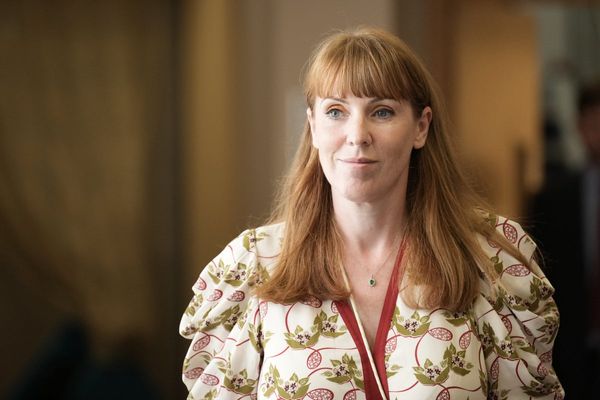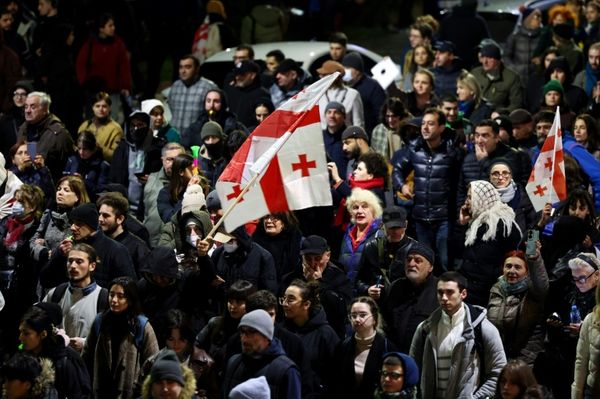
Here’s a question for you: since the last general election, has the British government been tough or soft on immigration? Depending on your political inclination, the answer might seem obvious – but the reality is more complicated. On the one hand, the Johnson and Sunak governments have brought an end to EU free movement and promised to deport unwanted asylum seekers to Rwanda. On the other, net migration – the difference between the number of people coming to live in the UK and the number of people leaving – reached a record high of more than 600,000 last year.
Depending on your political inclination, this might seem like typical Tory hypocrisy, but the distinguished migration scholar Hein de Haas says it’s a contradiction that runs through governments across the west, no matter who is in charge. Since the second world war, according to a long-term study of data from 45 countries by de Haas and colleagues, immigration policies have tended to become more liberal. At the same time, border defences – in the form of walls and surveillance, or crackdowns on people-smuggling – have gone up. Between 2012 and 2022, for instance, the budget of the EU border agency Frontex rose from €85m to €754m.
The paradox arises, argues de Haas, because governments in the west – committed, as they are, to forms of economic liberalism – are constantly trying to balance three competing demands. One is to remain open to global markets, which requires a degree of immigration to fill domestic skills shortages. Another is to protect the rights of those immigrants who do arrive to work, study or settle. A third is to respect the wishes of citizens who wish to see immigration limited or even reduced.
The problem is that only two of the three can be fulfilled at any one time. Reduce people’s rights to work or settle and you disrupt the smooth running of the economy. (Think, for instance, of the trouble Britain found itself in when there weren’t enough lorry drivers to deliver goods the Christmas before last.) Advocating open borders, on the other hand, is widely regarded as political suicide. So what most governments opt for instead are symbolic crackdowns – often harmful and counterproductive – on certain types of immigration. Or as De Haas puts it: “bold acts of political showmanship that conceal the true nature of immigration policies”.
This approach, de Haas suggests, is remarkably consistent across governments of the left and the right. But it has bequeathed us a toxic political debate, with participants frequently grouped into crude “pro” or “anti” immigration camps, that prevents us from seeing migration as it really is. Drawing on years of scholarship – de Haas is a sociologist and geographer who has held positions at the universities of Oxford and Amsterdam – How Migration Really Works is a clear and rigorous corrective to this distortion that aims to give the general reader the tools for a more informed debate in future.
De Haas’s primary insight is to look at migration as a global phenomenon – and not just from the perspective of countries in the west receiving migrants from elsewhere. Although media coverage often gives the impression that we are living in an unprecedented age of migration, in which the world’s impoverished masses are making their way to the west, this is not the case. Global migration levels have stayed remarkably stable since the second world war, with international migrants accounting for about 3% of the world’s population. Refugees account for an even tinier proportion, at a relatively consistent 0.3% – a fact that De Haas suggests should make refugee advocates think twice about claims of a “global refugee crisis”.
Yet while migration was once largely a case of Europeans making their way to the New World – and of the old European empires moving indentured workers from one colony to another – today the direction of travel has changed. More people are moving to the west, from a wider range of countries, than before. It’s a shift, De Haas acknowledges, but neither unprecedented nor out of control. (In the US, for instance, immigrants constitute about 14% of the population – around the same as they did a century ago.) Nor is it the poorest leaving home: in general, emigration is a result of economic development, as populations gain the education and means to move for work.
Another, equally important part of De Haas’s argument is that we should stop thinking of migration in terms of costs and benefits. Yes, immigration helps fill labour shortages, but it has little overall impact on labour markets, and the profits mainly go to employers. Yes, remittances help sustain communities back home, but their benefits are mostly cancelled out by the costs of people leaving in the first place. Instead, De Haas suggests, it’s more useful to think of migration as a fact of life. The social and political questions it raises, therefore – over rights at work, or economic priorities, or national identity – are ones that concern us all. As de Haas puts it: “Any real debate on migration will therefore inevitably be a debate on the type of society we want to live in.”
• How Migration Really Works: A Factful Guide to the Most Divisive Issue in Politics by Hein de Haas is published by Viking (£25). To support the Guardian and the Observer buy a copy at guardianbookshop.com. Delivery charges may apply.







